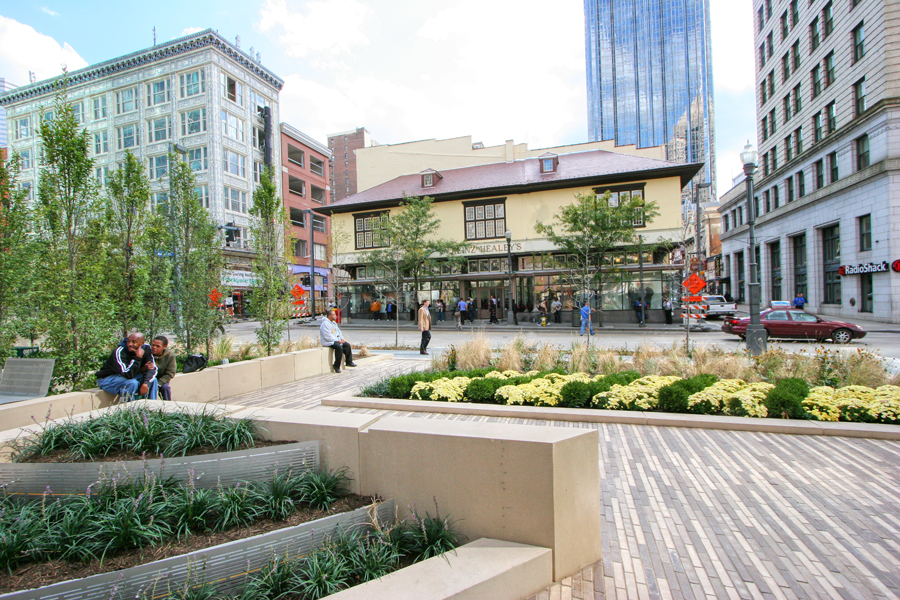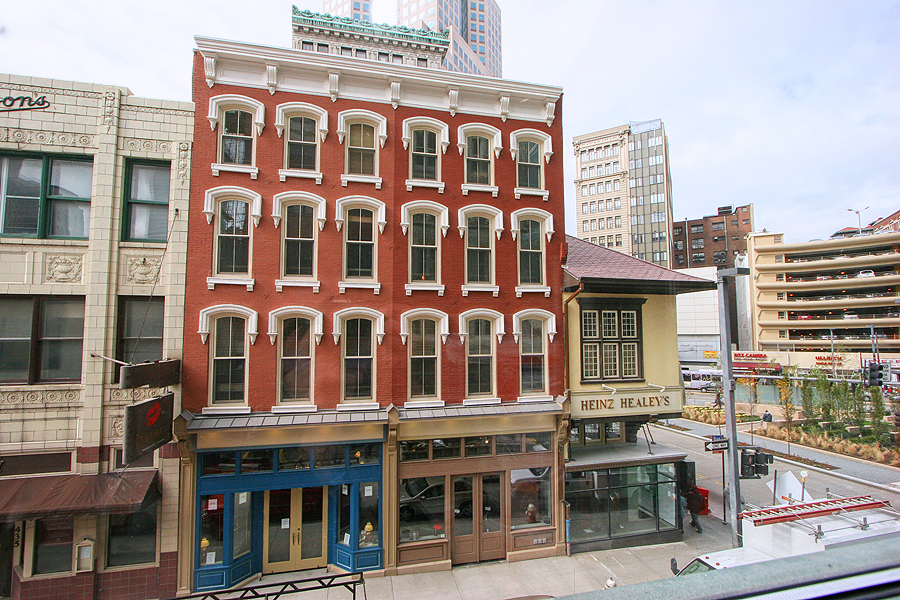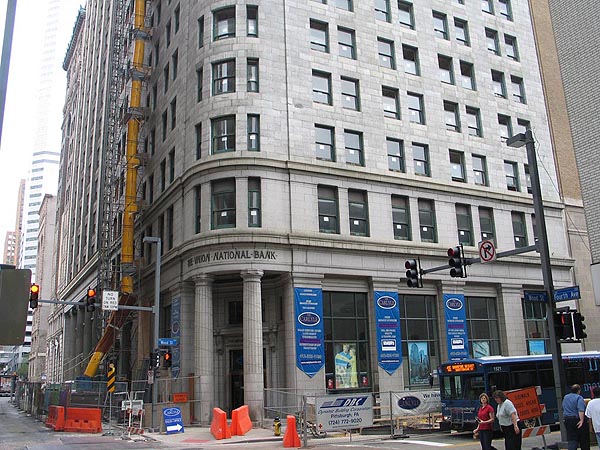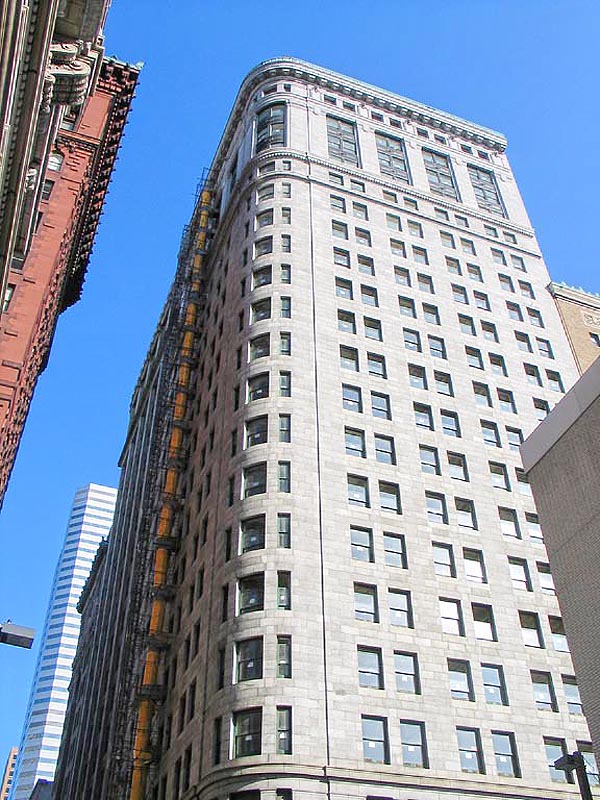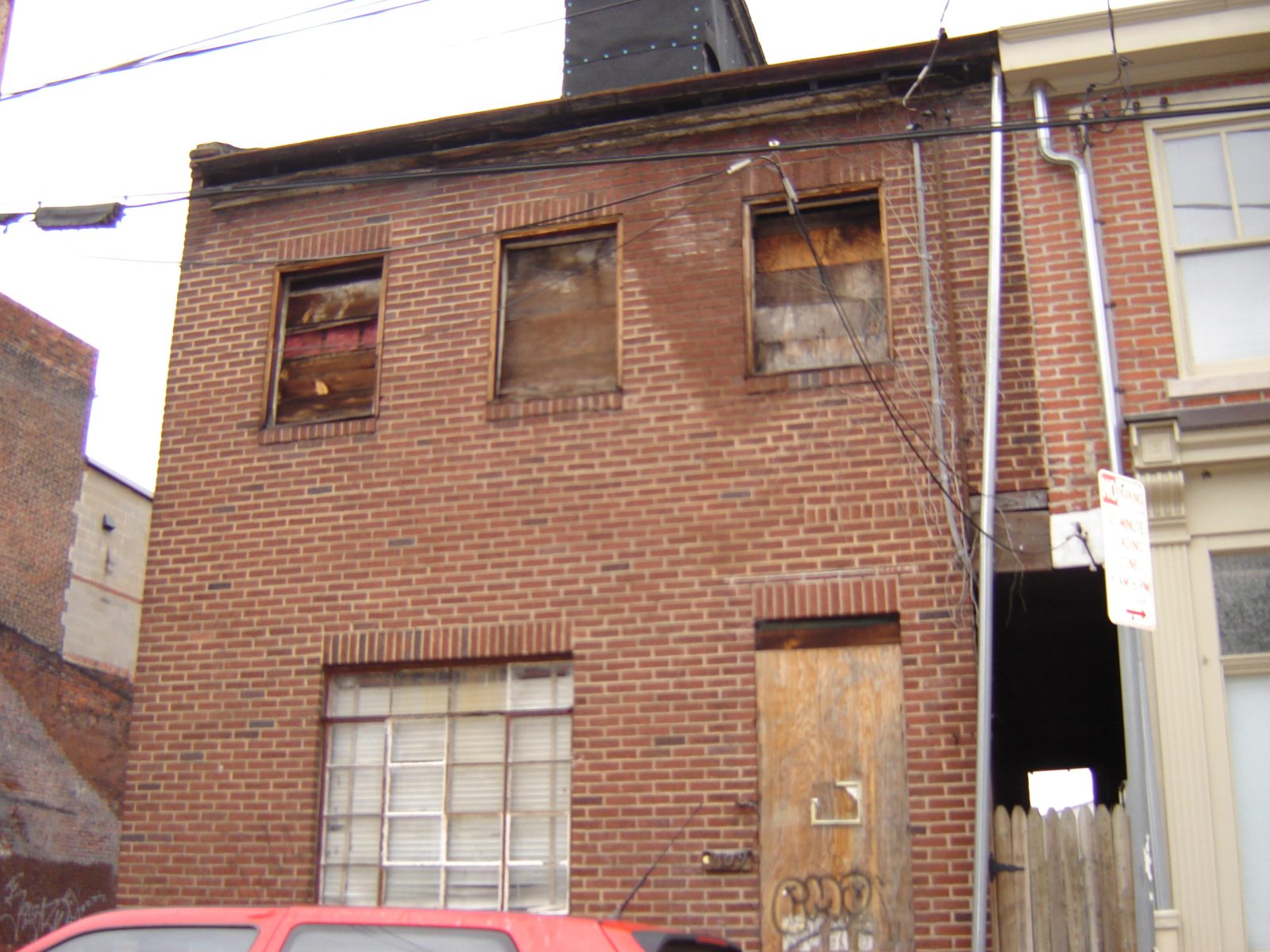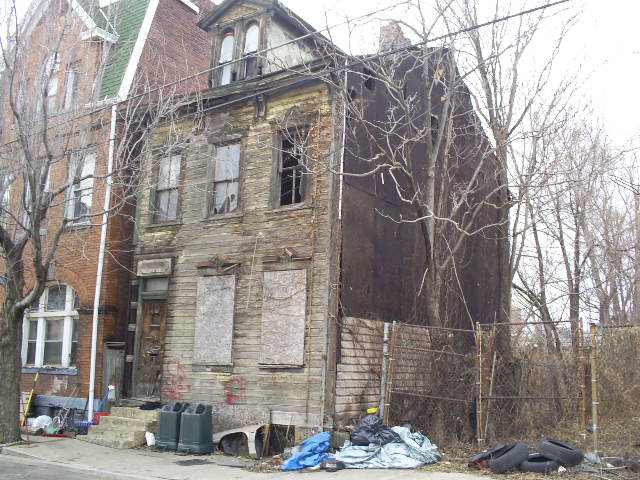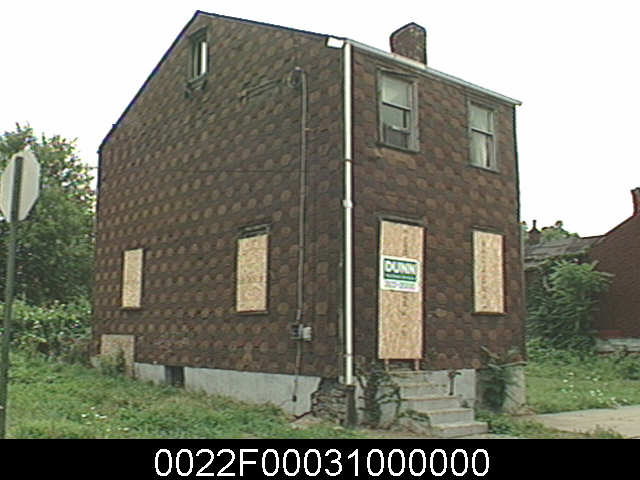
Category Archive: City Living
-
Apartments Leasing Downtown
PHLF News
November 5, 2009Of the seven apartments at Market at Fifth, four are leased, a studio with a study is currently available, and two of two-story penthouse apartments with expansive roof decks overlooking our green and growing roof with wonderful views of the architecture of downtown Pittsburgh are still available. Please call Michael at 412-471-5808 for leasing information.
-
Market at Fifth Receives National Housing & Rehabilitation Association Award
PHLF News
November 3, 2009The National Housing & Rehabilitation Association (NH&RA) recently presented its 2009 J. Timothy Anderson Awards for Excellence in Historic Rehabilitation to ten outstanding historic rehabilitation projects throughout theU.S. The awards were presented at a special luncheon during NH&RA’s 2009 Annual Fall Developers Forum conference at the Taj Hotel to honor outstanding real estate projects that involved rehabilitation of older, historic buildings using the federal historic rehabilitation tax credit. This year’s nominees competed in eight categories.
This year’s categories, and the winners in each, are as follows:
Best Mixed-Income Residential
Baker Square II, Dorchester, MA
Developer: WinnDevelopment, Boston, MA
Architect: The Architectural Team, Chelsea, MABest Market-Rate Residential
Market at Fifth, Pittsburgh, PA
Developer: Market at Fifth, LP, Pittsburgh, PA
Architect: Landmarks Design Associates, Pittsburgh, PABest Historic Rehabilitation Project Utilizing New Markets Tax Credits
Court Square Center, Memphis, TN
Developers: CGI & Partners Court Square Center, LLC, Memphis, TC
Telesis Corporation, Washington, DCArchitect: CM Design Corporation, Memphis, TN
Best Commercial / Retail / Non-Residential Project
The Old Cotton Factory, Rock Hill, SC
Developer: Barwick & Associates, Charlotte, NC
Architect: McClure Nicholson Montgomery Architects, Charlotte, NCBest Historic Rehabilitation Project Involving New Construction
Globe Mills, Sacramento, CA
Developer: C.F.Y. Development Incorporated, Sacramento, CA
Architect: Applied Architecture, Inc., Sacramento, CAMost Innovative Adaptive Reuse
Charles H. Shaw Technology & Learning Center, Chicago, IL
Developer: Homan Arthington Foundation, Chicago, IL
Architect: Farr Associates, Chicago, ILBest Historic Rehabilitation Project Utilizing Low-Income Housing Tax Credits – Large
Toward Independent Living & Learning (TILL), Chelsea, MA
Developer: Toward Independent Living & Learning, Dedham, MA
Architect: Mostue & Associates Architects, Somerville, MABest Historic Rehabilitation Project Utilizing Low-Income Housing Tax Credits – Small
Fairbanks Flats Rowhomes, Beloit, WI
Developer: Gorman & Company, Inc., Oregon, WI
Architect: Gorman & Company, Inc., Oregon, WIThe “Timmy” Awards were created by NH&RA in 2005 in memory of the late Boston architect and preservation advocate J. Timothy Anderson, a leader in the historic rehabilitation business. Throughout his career, Tim helped pioneer the adaptive reuse of historic buildings throughout Boston and other parts of the U.S. Tim’s notable Boston-area projects include the conversion of the Prince Spaghetti Building into housing, and the adaptation of Old City Hall for mixed-use. His conversion of the old Central Grammar School in Gloucester into housing for the elderly became a national prototype for the reuse of surplus schools in urban areas.
The federal historic rehabilitation tax credit is a primary tool used to generate equity to preserve and rehabilitate historic properties. The rehabilitation credit is a “two-tiered” credit, because there are two possible rates for calculating of the credit amount. The 20% credit is available for income-producing buildings that are considered certified historic structures. The 10% credit is available for non-residential, income-producing buildings originally constructed before 1936, which are not certified historic structures. Historic tax credits are often paired with other federal, state and local tax credits and subsidies and are often used in the development of affordable and market-rate rental housing as well as commercial, retail and industrial developments
For more than 38 years, National Housing & Rehabilitation Association has provided an ongoing forum for professionals in affordable housing and historic rehabilitation to exchange information and build new business relationships. For more information on the “Timmy” Awards, the Fall Developers Forum or NH&RA please visit www.housingonline.com or contact Greg Sidorov, 202-939-1773, gsidorov@dworbell.com.
The 2009 J. Timothy Anderson Awards for Excellence in Historic Rehabilitation are co-sponsored by the National Trust Community Investment Corporation, a subsidiary of the National Trust for Historic Preservation.
-
Neighborhood & Main Street Properties Available
Pittsburgh History & Landmarks Foundation
Main Street Properties for Sale & Lease: Click Here
Market at Fifth: Apartments & Retail Space in Pittsburgh’s Historic Downtown
From time to time, PHLF lists other properties for sale and lease. These listings can be found here when they are available.
——————————————————————————————————————-
Links Provided For Your Convenience, does not imply endorsement.
City of Pittsburgh Properties For Sale
The City of Pittsburgh, in an effort to reduce the number of vacant or abandoned properties, has created sources that offers a menu of properties for sale. Many of these properties are in Pittsburgh’s most historic neighborhoods.
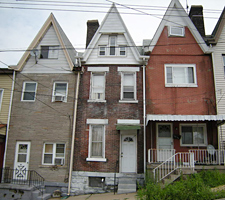
The Real Estate Division of the Department of Finance and the Urban Redevelopment Authority accepts inquiries from the general public for purchase of those properties.
Properties for Sale
Court Auction Sales
Sealed Bid Sales
Side Yard Sales
Vacant Lots for Sale
-
Landmarks receives preservation easement on historic downtown building
April 2, 2009
PHLF NewsOhio-based Spruce Street Properties, Ltd. has donated a preservation easement to Pittsburgh History & Landmarks Foundation on the exterior of The Carlyle, at Fourth Avenue and Wood Street that is being converted to luxury condominiums.
A preservation easement is a voluntary legal agreement made between a property owner and an authorized preservation organization to preserve the exterior of a historic building and assure appropriate alteration. The easement will be recorded with the deed, run in perpetuity and assist current and future owners in preserving the buildings historic and architectural features.
Pittsburgh History & Landmarks Foundation will be the monitoring agent for the easement and received a donation from Spruce Street Properties to assure the necessary funds to defend and monitor the easement forever.
“David Bishoff, a long-time owner of many buildings in Pittsburgh and a staunch supporter of maintaining the wonderful fabric of downtown through the preservation of its historic buildings, is to be commended for protecting the exterior of this important building which is a contributing structure in the Fourth Avenue Historic District,” said Foundation President Arthur Ziegler. “Once again, a creative developer has shown how we can move forward by building on our past.”
The Carlyle, formerly the Union National Bank Building, was designed by MacClure & Spahr and constructed in 1906. The 21-story neo-Classical building was a focal point of Pittsburgh?s Fourth Avenue financial district, once one of the most significant financial centers in the country. The Carlyle will provide downtown residential ownership starting at $279,000.
Pittsburgh Mayor Luke Ravenstahl attended the Foundation’s board meeting when the announcement was made.
-
Landmarks opposes the demolitions of 1403 and 1414 Nixon Street and 1109 Bingham Street
PREPARED TESTIMONY OF
ANNE E. NELSON, ESQ., GENERAL COUNSEL
PITTSBURGH HISTORY & LANDMARKS FOUNDATIONBEFORE HISTORIC REVIEW COMMISSION,
CITY OF PITTSBURGH PUBLIC HEARING ON CITY DEMOLITIONSJANUARY 7, 2008
Landmarks opposes the demolitions of 1403 and 1414 Nixon Street and 1109 Bingham Street because the City was instructed by the U.S. Department of Housing and Urban Development (HUD) to cease all demolition activities for any buildings located in National Register eligible or listed or local designated historic districts until the City complies with Section 106 of the National Historic Preservation Act and revises its procedures and relevant documentation.
HUD reiterated its instructions and concerns with the City’s Section 106 compliance in a letter dated December 29, 2008. In this letter, the City was further instructed to respond to HUD by January 16, 2009 with: (1) an update on the City’s progress in revising its procedures and relevant documentation to comply with Section 106, (2) assurance that the City has ceased demolition activities, and (3) addressing Landmarks’ concerns.
It is distressing that the City has failed to comply with Section 106 of the National Historic Preservation Act over the past six months. We have yet to receive any responses from the City to our letters commenting on its compliance with Section 106 that were sent in August and September 2008, nor have we received a response to our letter dated July 29, 2008 requesting to be a consulting party.
Landmarks will oppose all City demolitions in historic districts until it complies with Section 106, and we are notified of our consulting party status.
- 1109 Bingham Street
- 1414 Nixon Street
- 1403 Nixon Street
-
Public Hearing at Historic Review Commission on 200-210 Fifth Avenue, and 438 & 440 Market Street
PREPARED TESTIMONY OFANNE E. NELSON, ESQ.
GENERAL COUNSEL
PITTSBURGH HISTORY & LANDMARKS FOUNDATION
BEFORE HISTORIC REVIEW COMMISSION, CITY OF PITTSBURGH
PUBLIC HEARING ON 200-210 FIFTH AVENUE; 438 & 440 MARKET STREET
NOVEMER 5, 2008
As the future holder of a preservation easement on the Buhl Building and current holder of design control rights on the adjacent properties, Landmarks supports N&P Properties’ plans to rehabilitate the exterior of the Buhl Building, demolish the adjacent structures, and build a new building adjacent to the Buhl. The size, scale, and color of the proposed adjacent building compliment the blue terra cotta Buhl Building. Landmarks’ support of N & P Properties’ plans for the Buhl Building and adjacent structures, however, is contingent on the Pennsylvania Historical and Museum Commission approving Part 2 of their Federal Rehabilitation Tax Credit application.
-
Hill District deal angers Save-A-Lot executive
By Kim Leonard
TRIBUNE-REVIEW
Wednesday, August 20, 2008A Save-A-Lot executive is angry over a section of the new community benefits agreement for the Hill District that he views as an attempt to keep his discount grocery chain from building a store in the neighborhood.
The agreement among the One Hill Neighborhood Coalition, the Penguins and government agencies was signed Tuesday. The contract related to the new hockey arena being built at the neighborhood’s edge provides $2 million toward a grocery store and calls for “good faith efforts” to ensure the business is a full-service store with a pharmacy — and is a minimum 25,000 square feet.
Save-A-Lot discount supermarkets don’t contain pharmacies and are smaller. “It appears to us that the language was purposely drafted to specifically eliminate Save-A-Lot,” said Rick Meyer, vice president of market development for the St. Louis-based company, though Hill District officials disagreed.
Meyer emphasized yesterday that his company is ready to build a store, right away, in a neighborhood that has lacked easy access to groceries for more than two decades.
“All I am saying is that there has been noise and talk and theories and grandiose ideas for years, and no one has ever delivered,” Meyer said. “We are ready to deliver.”
Save-A-Lot wants to put a 16,850-square-foot store along Centre Avenue on land controlled by Pittsburgh’s Urban Redevelopment Authority. Prices would run 40 percent less than those in a regular grocery store.
But Kuhn’s, a locally based supermarket chain, more recently proposed a 100,000-square-foot store on the same site that would include a pharmacy, bakery, deli, meat counter and a fresh fish section. The Kuhn’s store would be part of a larger development called Centre City Square.
Neither URA officials nor Kuhn’s representatives could be reached for comment yesterday. The URA is expected to choose one of the proposals in early September. Kuhn’s hasn’t said how quickly its store might open.
Howard Slaughter, CEO of Landmarks Community Capital Corp., has been working with Save-A-Lot and said based on the specifications in the benefits contract, the discount grocer might have to drop its plans.
“If you already know one store is under 25,000 square feet, why put that language in there?” he asked. “The document should have said a ‘quality grocery store’ irrespective of the size.”
One Hill Chairman Carl Redwood said the coalition wrote the grocery store standards into the benefits contract. A larger, full-service market “has clearly been the preference of the community for some time,” he said, adding the document doesn’t exclude Save-A-Lot.
“We would like to have both, actually,” Redwood said of the chains, which could locate in different sections of the Hill District.
Hill House CEO Evan Frazier said early drafts of the benefits agreement contained even stronger, more specific requirements for a neighborhood grocery store. They were written before Save-A-Lot came on the scene, he said.
Frazier said Save-A-Lot still should be eligible to benefit from the $1 million each that the Penguins and the URA plan to put toward a new store. Frazier said he “would hope” the URA doesn’t choose a retailer based on terms in the agreement.
Slaughter also said Kuhn’s plan for a larger store with more departments shouldn’t be the deciding factor. “Whatever supermarket goes there, other retailers will follow,” he said.
Kim Leonard can be reached at kleonard@tribweb.com or 412-380-5606.
-
Dr. Howard Slaughter, Jr. Discusses Urban Economic Loan Fund
Howard Slaughter Jr., CEO of Landmarks Community Capital Corporation interviewed on KDKA’s “The Sunday Business Page” and discusses the Urban Economic Fund at the Homewood branch of PNC Bank.
Press Play to View Video

